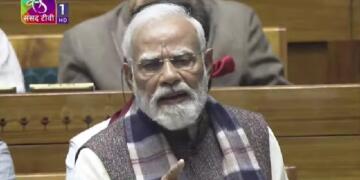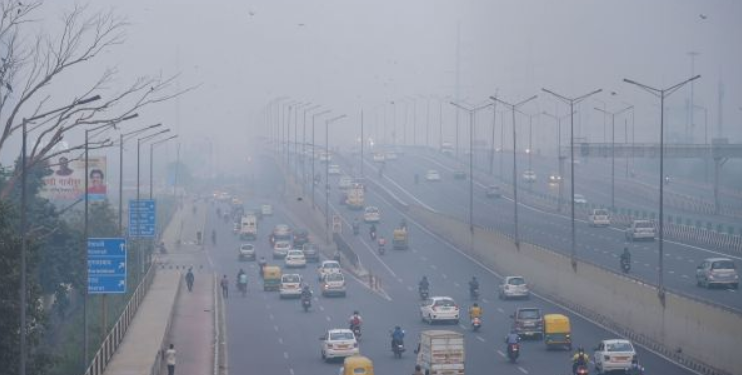There has been much debate, discussion, activism and politics on the severe levels of Air pollution in Delhi. The much-publicized and criticized Odd-Even scheme of Kejriwal government, the declaration of a Public health emergency and closed schools has made Delhi pollution the core chai-time discussion topic.
However, the funny thing is about the discussion around Delhi pollution is that even people from Haryana and Uttar Pradesh are concerned about the livability of Delhi while their own cities are turning just as polluted as Delhi if not worse.
According to India Today Data Intelligence Unit (DIU), which analyzed AQI bulletin by Central Pollution Control Board (CPCB), Delhi does not feature among the top 10 most polluted cities of India. The National Capital Territory of Delhi ranks 14th among the most polluted cities of the country.
According to India Today, after calculating the average AQI for 24 hours from the 3rd to the 4th of November, it was found that Jind in Haryana had the most toxic air among the 97 cities analysed. Jind’s average AQI was 448, while Delhi’s average AQI was 407.
The cities from UP, Haryana, Bihar, and Punjab are among most polluted. But, there is no media havoc regarding the pollution in these cities. Even popular Hindi newspapers like Dainik Jagran, Hindustan Samachar, and Amar Ujala are reporting Delhi’s pollution instead of about the states, where their primary reader lives.

The TV media has also been concerned only about Delhi-NCR. Being the capital, it is obvious that Delhi will receive disproportionate coverage. However, apathy towards the other cities has left the inhabitants vulnerable.
The Media attention about Delhi’s pollution has forced the state government municipal authorities to take measures to curb the pollution. The municipal authorities asked the water department to sprinkle water on trees to minimize the smog. Delhi government has implemented the odd-even scheme, issued an advisory to children to not play outside for a few days, closed the schools, and took many other measures.
One can argue about the possible impact of these measures, but, at least the government is actively responding to the crisis.
Media sees itself as the fourth pillar of democracy and calls itself the permanent opposition. Media coverage to important issues of public interest brings ‘accountability and transparency’ in government. The voters can hold the government accountable for one time is five years, but, the media keeps them accountable for the period between elections.
However, the lack of Media coverage on the severe pollution in Uttar Pradesh and Haryana has allowed the state governments to escape accountability. Apart from curbing stubble burning, not much has been done to avert the crisis and they have not announced any serious measures so far.
This does not only harms to people of Haryana, UP, and Punjab, but, impacts Delhi too. The farmers in these states are still proudly burning stubble and posting pictures on social media. These uninformed farmers are of the view that only the people living in Delhi will be hurt from stubble burning, it would not have any impact on their own life. The lack of media coverage about the pollution in cities of Haryana has saved the farmers from the guilt factor and they continue to burn stubble.
Until and unless media starts focusing on the pollution crisis all over North India, the farmers will not act responsibly.
The so-called National Media is centred in Delhi NCR. Therefore, any issue in the region gets disproportionate media attention and binaries are created. Delhi has been often dubbed as the rape capital of the country, while it is true that women safety is a major issue in the city, but, it is also true that the incidents here get disproportionate media attention, while several others across the country are buried in the noise.
Therefore, as late finance minister Arun Jaitly said in 2014, “As a part of the red carpet glean for the tourists, our law and order – ‘one small incident of rape in Delhi’ advertised world-over is enough to cost us billions of dollars in terms of lower tourism.”
Another good example of binary was cracker ban on Diwali. The celebrities asked the people to celebrate cracker less Diwali and the sale of crackers dropped by 40 per cent. But the reality of the issue is that the air quality in cities in peninsular India in post-Diwali week was as good as pre-Diwali week because the sea breeze saves these cities from air pollution.
Therefore, the people living in Delhi or Chennai could afford to burn crackers but those in Delhi can’t. But the binaries created in media harming the cracker industry as well as an important Indian tradition.
The lack of media coverage in about the sorry state of air quality in UP and Haryana, makes these governments unaccountable. This is not only harmful for the people of Haryana, but, the citizens of Haryana are also get impacted due to this apathy towards the states. As long as the mindset of National Media and governments remains centred around Delhi and Mumbai, we will continue to face these issues.




























